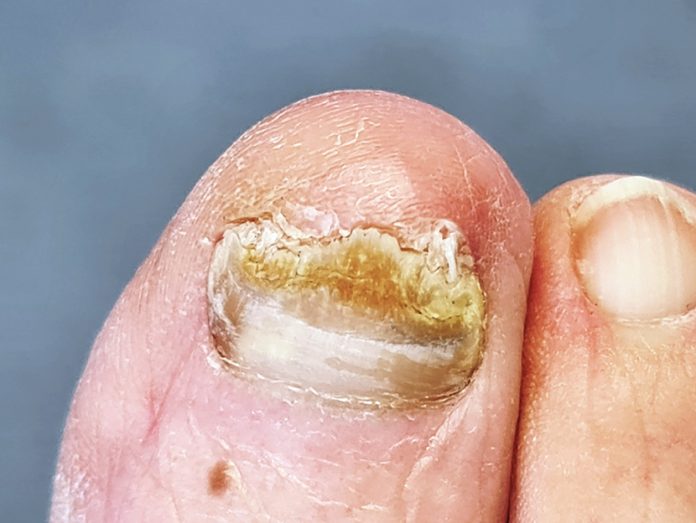Nail fungus and nail psoriasis are two conditions that affect the nails. They have similar symptoms, and you can have both fungus and psoriasis at the same time, but they are different and have separate treatments.
Nail fungus is an infection that happens when fungi get under your nail. The fungus turns nails thick, discolored, and brittle. Onychomycosis is another name for nail fungus.
Nail psoriasis is an autoimmune disease in which skin cells multiply too quickly. Like nail fungus, psoriasis causes discolored, pitted nails. Most people with nail psoriasis also have scaly skin rashes, and they sometimes have joint pain called psoriatic arthritis.
Both fungus and psoriasis can affect the nails on your fingers and toes. But nail psoriasis is more likely to be on just the fingernails, and fungus is more likely to affect the toenails.
You can’t catch nail psoriasis from someone else or spread it to other people. Nail fungus is contagious – it can spread from one person to another.
Nail Fungus vs. Psoriasis Causes
Fungi cause nail fungus. This group of tiny organisms includes mold, yeast, and mildew. A type of mold called a dermatophyte causes the most common fungal nail infection, tinea unguium.
You can pick up fungus if you walk barefoot in places where other people walk, like swimming pool decks and locker rooms. Fungi can also grow in wet shoes. Once these organisms are on your feet or hands, they can get under your nail and multiply. Athlete’s foot is a fungal infection that sometimes spreads from the foot to the toenails.
You’re more likely to get nail fungus if you:
- Are over age 60
- Have diabetes
- Have a weak immune system from a disease like HIV
- Have a problem with blood circulation because of peripheral vascular disease
- Have a cut or other injury on your nail
- Have had athlete’s foot
Psoriasis is an autoimmune condition. Your immune system overreacts and causes inflammation in your skin that speeds up the production of new skin cells. The extra cells build up on your skin and form scaly patches. Psoriasis inflammation can also affect the nails, causing symptoms like pitting, thickness, and color changes. About half of people with psoriasis have nail psoriasis, and up to 90% will have nail problems at some point in their lives.
Nail fungus and nail psoriasis can look similar, and they sometimes overlap. Having psoriasis makes you more likely to get a fungal nail infection. That’s because psoriasis damages the nails and makes it easier for fungi to get underneath them. Some of the medicines that treat psoriasis weaken your immune system and lower your body’s defenses against fungi and other germs.
Nail Fungus vs. Psoriasis Symptoms
Both nail fungus and nail psoriasis change the color and texture of your nails. Nails with fungus may be:
- Thick
- Cracked or crumbling
- Yellow, white, or brown
- Misshapen
- Lifted up from the nail bed (the skin under the nail)
- Painful
- Smelly
Nails with psoriasis may be:
- Dented or pitted
- Covered in grooves called Beau’s lines or brown spots called oil spots
- Thin and crumbling
- White, yellow, red, pink, or brown
- Separated from the nail bed (you can see the skin underneath)
The color changes might look different on dark skin, especially in people who have psoriasis. Instead of looking red, the psoriasis rash may be purple or brown with silver flakes.
Nail Fungus vs. Nail Psoriasis Diagnosis
A primary care doctor, dermatologist (skin doctor), or podiatrist (foot doctor) can diagnose these nail problems. The doctor will examine your nails for symptoms like nail pitting, discoloration, crumbling, and separation from the nail bed. They may ask about your medical history, including whether you’ve had symptoms of psoriasis or psoriatic arthritis.
The doctor might clip off a small piece of the nail or take a scraping of material from under your nail. Then a lab will look at the sample under a microscope to see if you have an infection. They might also let the sample grow in a special dish to find out what type of fungus caused the infection.
Credit: webmd.com









